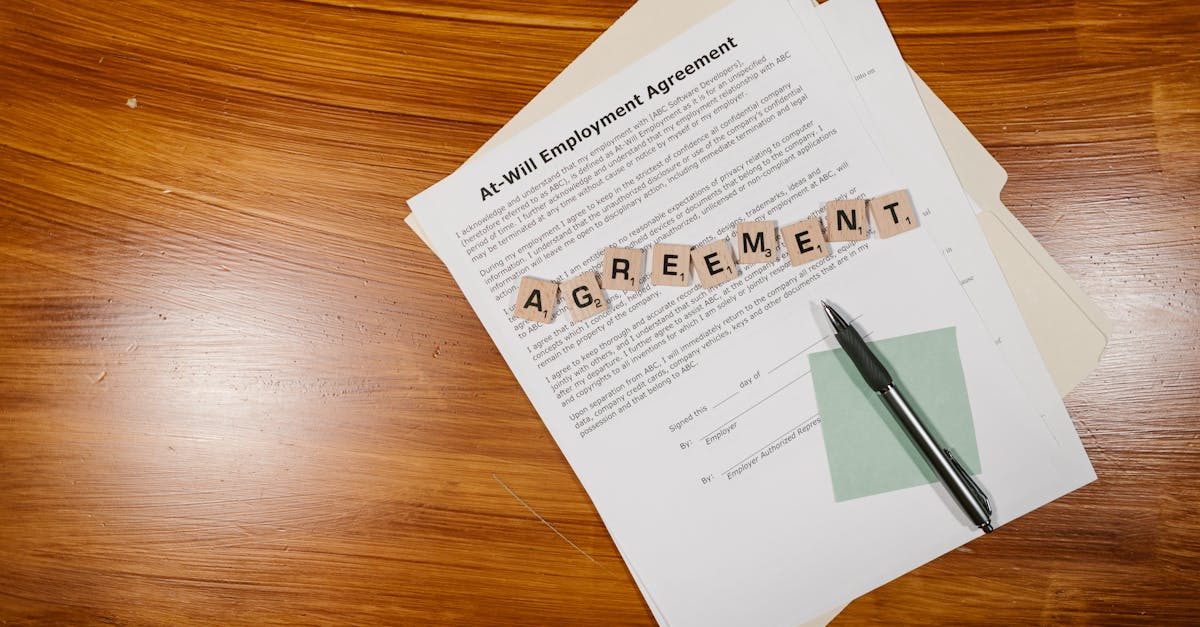
Introduction
Missing, inconsistent, or hard-to-find records turn routine HR and legal work into audit nightmares — delayed hires, DSAR breaches, payroll reconciliation headaches, and avoidable regulatory risk. With rising regulatory scrutiny and distributed teams, the fastest way to stop firefighting is to lock down how you capture, sign, and store evidence. Smart, template-driven processes and document automation don’t just speed work up; they create immutable, auditable artifacts that protect your people and your business.
This article walks you through a practical playbook: how to define audit scope and required evidence, capture immutable records with smart forms and e-sign, automate SLAs and escalations, use template checklists, integrate with HRIS/payroll and document stores, and operationalize controls and testing — all to build a defensible compliance workflow for HR & Legal audits.
Define the audit scope and required evidence for HR & Legal audits (onboarding, terminations, DSARs)
Scope definition: clearly define which HR and Legal processes the audit covers — onboarding (offer letters, right-to-work checks, background checks), terminations (termination letters, final pay records, exit interviews), and DSARs (data access requests, response logs, redactions).
Evidence types to collect:
- Signed employment agreements, offers and amendments — link templates where useful: employment agreement.
- Onboarding artifacts: identity verification, tax forms, benefit enrollment, and appointment decisions (example: appointment decision).
- Termination records: termination letter, final pay run, severance agreements, and exit checklist (termination letter).
- DSAR documentation: request intake form, proof of search, redaction records, and response timestamps.
- Policy notices and disciplinary records — see standard notice templates: default notice letter.
Audit workflow considerations: map these evidence items to a compliance workflow that specifies who must provide each item, acceptable formats (PDF, signed e‑form), retention period, and acceptable proof of delivery. This becomes the backbone of any regulatory compliance workflow or audit workflow in HR & Legal.
Design data capture and immutable evidence collection with smart forms and e‑sign
Smart forms and immutable capture — use smart forms that enforce required fields, validate IDs, and attach metadata (who captured it, device, timestamp). Store submitted forms as immutable records to prevent tampering and ensure chain-of-custody.
e‑Sign and versioning:
- Require e‑signatures for contracts and notices; capture IP, timestamp, and signer authentication method.
- Keep every signed version and amendments as separate, immutable artifacts to support future audits and DSAR responses.
Key features to require from compliance workflow software:
- Tamper-evident storage and cryptographic hashing.
- Automated metadata capture and export for audit trails.
- Pre-built compliance workflow templates and the ability to create custom forms (use templates for employment and termination forms).
Practical tip: link the e‑signed termination or employment agreement forms directly into the record so auditors can retrieve the exact document submitted at the time of the event (see sample termination and employment forms above).
Automate SLA orchestration and escalation rules to ensure timely responses
SLA orchestration: codify response times for each process step — e.g., onboarding verification within 48 hours, DSAR acknowledgement within 24 hours, termination payroll reconciliation within three business days.
Escalation rules:
- Use tiered escalation: auto-notify the owner, then escalate to manager, then to Legal or HR head if SLA breaches persist.
- Trigger different paths for high-risk items (sensitive DSARs, redundancies, litigation-exposed terminations).
Automation benefits: reduces human error, speeds up compliance management, and provides auditable proof of SLA adherence. These are core advantages of compliance workflow automation and regulatory reporting automation.
Monitoring and alerts: integrate dashboarding and real-time alerts so your audit workflow shows SLA compliance trends and pending escalations at a glance.
Template-driven checklists: employment agreements, termination letters, disciplinary records and notices
Templates as single source of truth: maintain approved templates for employment agreements, termination letters, disciplinary notices, and default notices in your policy management software or document store to ensure consistency and legal compliance.
Essential templates and links
- Employment agreements — use certified templates: employment agreement.
- Termination letters — standardized, reason-coded templates to speed processing: termination letter.
- Disciplinary notices and general default notices — keep versions and approval history: default notice letter.
Checklist structure:
- Pre-signing: offer details, background checks, legal clauses.
- Signing: e‑signature, payroll setup, benefits enrollment.
- Termination: termination letter, final payslip, return of property, exit interview notes.
- Discipline: incident log, investigation notes, decision document, notice served.
Implementing template-driven checklists makes compliance process automation repeatable and produces consistent, auditable artifacts for HR and Legal audits.
Integrations: link audit workflows to HRIS, payroll and document stores for fast reconciliation
Why integrations matter: linking your compliance workflow to HRIS, payroll, background-check vendors and document repositories eliminates manual reconciliation, speeds audits, and reduces risk from data drift.
Key integration points
- HRIS (employee records): sync hire/termination dates, job codes, manager assignments.
- Payroll systems: reconcile final pay, benefits deductions, and statutory filings.
- Document stores and DMS: attach signed agreements, ID checks, and disciplinary records with metadata.
- Audit management systems and GRC platforms: centralize findings, remediation tasks, and regulatory reporting.
Integration best practices:
- Use APIs or connectors to keep a canonical record of employee state.
- Log reconciliation events in the audit workflow so the auditor sees who reconciled what and when.
- Automate cross-system alerts for mismatches (e.g., employment status in HRIS vs. signed contract present).
Well-integrated systems transform a slow audit workflow into an efficient compliance workflow, and enable faster regulatory compliance reporting and audit workflow reviews.
Operational playbook: testing, role-based access controls and audit log reviews
Testing and validation: regularly test workflows in a sandbox before rolling out changes. Run sample audits and DSAR simulations to validate evidence capture, SLA enforcement, and automated escalations.
Role-based access controls (RBAC):
- Enforce least privilege — separate duties for HR processors, legal reviewers, and auditors.
- Use signed approvals and multi-step signoffs for sensitive actions (terminations, settlements).
Audit log reviews: schedule periodic log reviews to detect unusual access patterns, tampering attempts, or missed escalations. Keep logs immutable and searchable for e‑discovery.
Governance and continuous improvement: tie your operational playbook back to governance, risk and compliance (GRC) processes. Track KPIs (SLA adherence, time-to-close audits, number of DSAR breaches) and iterate on templates and automation rules.
Final operational tips: keep versioned playbooks, run quarterly tabletop exercises, and map every change to an approval record so your compliance management processes remain defensible and auditable.
Summary
Missing or inconsistent records are the root cause of many HR and legal headaches — from delayed hires to DSAR breaches and payroll mismatches. By defining scope, capturing immutable evidence with smart forms and e‑sign, automating SLAs and escalations, and using template-driven checklists tied to HRIS/payroll and document stores, you make those headaches auditable and repeatable. Document automation shortens cycle times, reduces human error, and produces defensible evidence that protects people and the business while keeping your compliance workflow transparent and testable. Ready to get started? Explore templates and automation at https://formtify.app.
FAQs
What is a compliance workflow?
A compliance workflow is a defined, repeatable process that maps the policies, tasks, roles, and evidence required to meet regulatory or internal rules. It specifies who does what and when, the artifacts that must be captured, and how exceptions or escalations are handled, so audits can reproduce the sequence of events.
How do you create a compliance workflow?
Start by scoping the processes you need to cover, identify required evidence and retention rules, and map each step to an owner and timeline. Then implement smart forms, template checklists, SLA rules, and integrations (HRIS, payroll, DMS) and validate the workflow through tests and role-based access controls.
What tools are used for compliance workflows?
Typical tools include document automation platforms, e‑signature services, HRIS and payroll systems, document management systems, and GRC or audit management software. Choose solutions that offer tamper-evident storage, automated metadata capture, API connectors, and pre-built compliance templates.
How does automating compliance workflows reduce risk?
Automation reduces manual steps that cause errors or missed deadlines by enforcing required fields, SLAs, and escalation paths. It also creates immutable audit trails and standardized templates, which make investigations, DSAR responses, and regulatory reviews faster and more defensible.
What’s the difference between a compliance workflow and an audit workflow?
A compliance workflow focuses on the ongoing processes and controls needed to remain compliant day-to-day, while an audit workflow is the structured review that verifies those controls and evidence after the fact. In practice, a strong compliance workflow makes audits faster by ensuring evidence is captured, stored, and reconciled ahead of any review.





